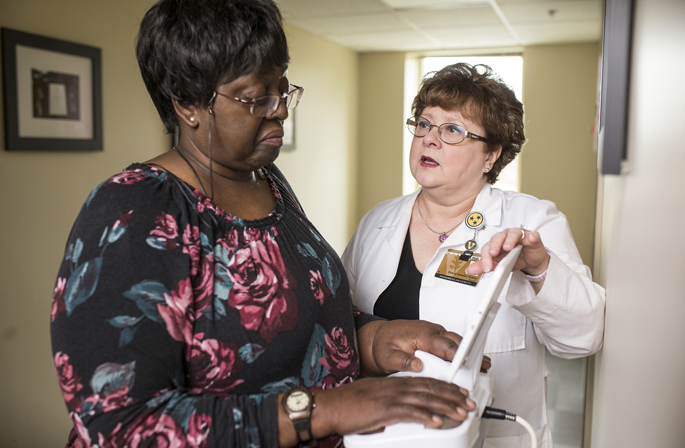Lymphedema patients saw a nearly 80 percent reduction in cellulitis episodes by using an advanced pneumatic compression device at home, according to a study in JAMA Dermatology co-authored by Vanderbilt University School of Nursing’s Sheila Ridner, Ph.D., and University of Minnesota School of Public Health Associate Professor Pinar Karaca-Mandic, Ph.D.

The reduction in episodes also led to a 37 percent reduction in lymphedema-related health care costs for study participants, Ridner said.
“This could be a game-changer in the area of lymphedema care,” Ridner said. “Up to 10 million people in the United States are living and oftentimes suffering with symptoms of lymphedema.
“The idea that a home advanced pneumatic compression device can provide relief, decrease the number of cellulitis episodes and save money is an important new option for patients.”
Lymphedema is an accumulation of fluid in tissues commonly caused by abnormalities in the lymphatic system or removal or damage to a person’s lymph nodes. Symptoms include swelling, recurrent cellulitis, loss of physical function, psychological stress and diminished qualify of life.
Lymphedema cannot be cured and is typically managed through combined therapies of manual lymph drainage, multi-layer bandaging, decongestive exercises, skin care and long-term self-management.
The compression device used in the study sequentially inflates over areas of the body affected by lymphedema to facilitate the movement of excess fluid from the limb back to the cardiovascular system.
The study analyzed 718 lymphedema patients who received care at sites across the United States over a five-year period (2007-2013), and evaluated event rates and costs for a 12-month period prior to and a 12-month period after treatment. After receiving a device, patients experienced a reduction in outpatient hospital and physical therapy visits, which significantly lowered their health care costs.
Among study participants with cancer, cellulitis episodes were reduced from 21.1 percent to just 4.5 percent — a 79 percent reduction. Among non-cancer participants, cellulitis episodes were reduced from 28.8 percent to 7.3 percent — a 75 percent reduction. Lymphedema-related physical therapy and outpatient visits were also reduced, resulting in a 37 percent decrease in lymphedema-related costs, excluding medical equipment, per patient among those with cancer, and a 36 percent decrease in costs for the non-cancer cohort.
This study represents the largest investigation ever performed to define the impact of a single lymphedema treatment device in a national population. Using de-identified data from a large U.S. health insurer of more than 34 million individuals, the authors measured the impact of an advanced pneumatic compression device (the Flexitouch System, Tactile Medical, Minneapolis) on health outcomes and health care costs.















